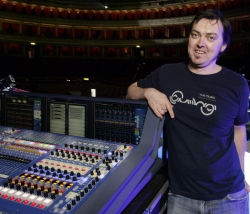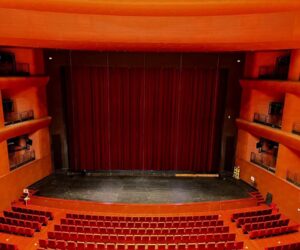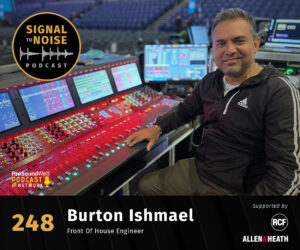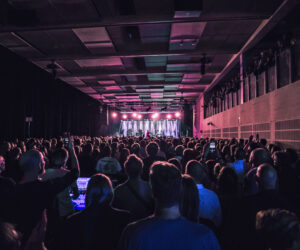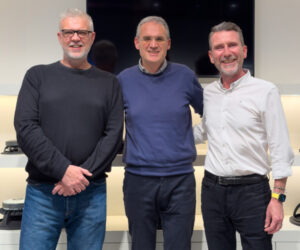The recent 15-date “Snow Patrol Reworked” tour of the UK and Ireland recreated songs from the band’s 15-year career, with a dual Midas XL8 system at front of house and monitors provided by Britannia Row.
As the shows featured six band members, 10 musicians and special guests, all 96 channels of each desk were full to capacity.
“The band wanted to create an organic reconstruction of their songs, so lots of different types of acoustic instruments are being used,” said monitor engineer Tristan Farrow. “We have up to 18 musicians on stage at one time, using a combination of in ear monitors and wedge mixes, hence my desk is full. All the inputs and outputs are being used, we even have to use the direct inputs and outputs for the vocal effects.”
Tristan was making good use of the system’s automation on this tour. “I’ve had to create a scene for every song,” he said. “Each song needs to be its own picture portrait, with subtle mix changes making all the difference to the emotion conveyed in each song. Also, there are so many instruments that need to be muted and unmuted, that can’t be left open all the time because of the spill.
“This is combined with musicians changing position and needing their mix to change with whatever instruments they’re playing at the time. The Show Editor feature allows scene changes to become seamless. You can propagate a mix change which is channel and mix specific. Without it, it would be very difficult to do this show with the continuity the musicians demand.”
Given the amount of instruments onstage, including guitars, harp, accordion, banjos, mandolins, xylophone, glockenspiel, violins, cello, pianos, drums and a percussion section, the XL8’s small footprint has been a bonus, particularly as all Farrow’s effects and dynamics are onboard.
“The desk’s EQ is fabulous, and I particularly like the low pass filters, especially with this many mics on stage. You can tidy up the cymbal spill down the vocal mics, which has really helped with a lot of the mixes, because 90 open mics can lead to a bit of a mess. I’m a big fan of the compressors, but I’m not using anything to color the sound, rather to help solidify it.”
Over at front of house, Suneil Pusari was touring the XL8 for a first time, having worked extensively with XL4s in the past. “Due to the complexity of the show, using a digital board has simplified dealing with so many changes,” he said. “To try do this on a analogue board could be a nightmare. The show itself changes so much I wanted to keep a level of coherency from song to song. For it to be changing dramatically in terms of effects or tone wouldn’t suit it. The show starts off very simply with just the harp and a vocal and builds gradually, so I wanted the mix to build organically as well.
“I’m using the onboard delay for space rather than effect, for example, and the gates and compressors are great, with the four modes of compression all doing what they’re supposed to. I find them really accurate, unlike a lot of digital compression. It’s a very musical board, it has tone and character and you can feel what it’s doing, so you work with the board rather than using it as a means to an end.
Suneil is also using the XL8 automation’s Show Editor feature. “This comes in very handy because the band change their arrangements and instrumentation every day, so we can start off with scenes and quickly go in and change things, either across the board or individually,” he said.
Given the unique nature of each show, each one was recorded using a Klark Teknik DN9696 high resolution audio recorder. “It’s very straightforward to set up and use, the recorder is very reliable, and it’s also been good for virtual soundchecks,” said Suneil.


